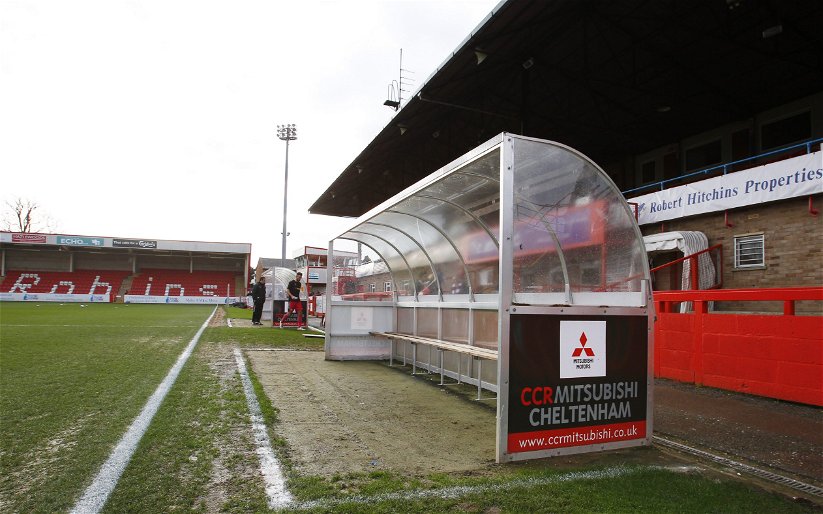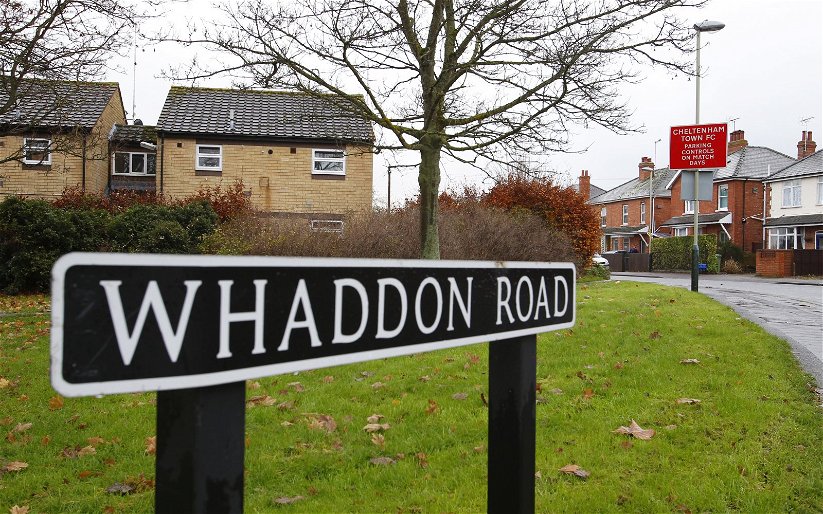For an entirely unexpected reason, I was thinking about my school days the other week. It was with a dull sense of shock that I realised it was forty years ago, which would explain why my memory of it is so hazy. Most of the teachers are probably dead now, and a cynic would say some of them deserve to be. I could happily have killed a couple of them myself. Perhaps I got through school in spite of them, rather than because of them.
I do remember that the selection of texts for A-level English was met with varying degrees of enthusiasm. The Mayor of Casterbridge and The Return of the Native were very well-received because they resulted in a bizarre five-day trip to Dorset in a Sherpa Van ostensibly to see Thomas Hardy’s Wessex. What we mostly saw was the inside of a range of convivial olde worlde pubs with roaring fires and an abundant supply of the magnificent Royal Oak, brewed by the now sadly departed Eldridge Pope. I remember our visit to Lyme Regis and having to explain to the English master leading the expedition that The French Lieutenant’s Woman was not actually written by Hardy, and was not on the syllabus in any case. One of my fellow students called him a bungling fool, and we all trooped off to The Ship Inn.
We had to suffer The Moonstone by Wilkie Collins, which is known for two reasons: firstly that it is the first modern detective novel, and secondly that it is really boring. Also registering high on the scale of tediousness was Charles Dickens’ treatise on wasting paper Little Dorrit, which was a thousand pages of sheer tripe, and Chaucer’s The Knight’s Tale, which was a hundred pages of sheer tripe. I have forgotten the rest.
So what triggered these reminiscences in the first place? The answer lies in that dreadfully melodramatic midwife programme on Sunday evenings. Despite being a very intelligent woman, my other half never misses an episode. That means I have to listen to it too, if not exactly watch it. But what caught my attention was the extraordinary presence of a certain Jenny Agutter playing the chief nun, or whatever they are called. Allow me to run that by you again: Jenny Agutter playing a nun.
For the benefit of the more junior members of this board, Jenny Agutter endeared herself indelibly to schoolboys of the Seventies due to her inability to keep her clothes on for more than five minutes in any film she ever made. To see her in a nun’s habit almost recalls a Benny Hill sketch, but the reality is that a lot of time has passed us by since then. Bear with me, there is a connection.
The rest of my A-level English course was taken up by the obligatory diversion into the sixteenth and seventeenth centuries, and to Mr Shakespeare. In fact we had four diversions into him, namely The Winter’s Tale, Much Ado About Nothing, Troilus And Cressida, and King Lear. Having to study four Shakespeares might have been anathema to most schoolboys, but surprisingly not to us. The reason for that was simple: the English department insisted that we be taken to London to see not only the set texts in performance, but also a range of other Shakespeares too. That gave us ample opportunity to sample London’s many fabulous pubs, and one day we chanced upon one adjacent to Waterloo Station that sold our old Dorset favourite Royal Oak. And that is how a spit and sawdust pub on the south bank of the Thames became the local for a group of schoolboys from Kesteven.
On one specific occasion, we went to Stratford. That was quite exciting because none of us had ever been there before. Not the Royal Shakespeare Theatre or the town, but all those lovely pubs. We were there to see King Lear featuring Michael Gambon in the title role with Juliet Stevenson, Sara Kestleman and…Jenny Agutter as the three daughters.
Well, Agutter was simply magnificent. I can’t say that any of us actually watched the play at all because we had seats right at the front and were all too busy drooling. The area between our seats and the stage was awash, I can tell you. And because it was a matinee staged mainly for the benefit of school parties, some of the actors came out afterwards to answer any questions we might have. And guess who came out to see us? I know this sounds terribly sexist in today’s ultra-PC age, but the inescapable fact was that she was probably the most gorgeous woman I have ever seen. Lots more gazing and longing and drooling followed, and we went home very happy teenagers. The girls on the coach home called us ‘pathetic’, but no one cared a jot because we were seventeen and it was 1982. Seeing her playing a nun in Shoot The Midwife at almost seventy is a stark reminder of how long ago that was.
And that really is the premise of this piece. Whilst those sixth form theatre/pub trips were not overly interesting per se, it did give us the opportunity to see some top names of the age. We saw Gambon twice, Frank Middlemass, Sheila Hancock, Robert Stephens, Brian Glover, Pete Postlethwaite and others far too many to mention. That was a thrill of a kind for a gang of naive schoolkids from Lincolnshire, but what it also did was offer us a glimpse of the stars of the future, although we had no idea of that at the time. We saw Penelope Wilton long before the awful Ever Decreasing Circles or any television exposure to speak of. There was Leonie Mellinger, Louisa Rix, Hugh Quarshie and more. We also saw Caroline Langrishe in her mid-twenties and I’m afraid we drooled over her too.
So much for the stars of the theatre. But does the same thing not happen in football?
When I was a boy, I could pretty much name every player in the First Division. Not only that, I could usually give some information about those players right down to their height and weight. Much of that came from the old football cards we used to collect, and I am not talking about the more modern money-minting Panini monster. The numbers were much smaller of course – it is inconceivable that Chelsea could have had forty-five players in their squad at one time, never mind having that number out on loan. These are changed days, and I would struggle now to name more than two or three players from each Premier League club. As for providing any information about them, I advise you not to hold your breath.
Much of that stems from the mass importation of overseas players in recent years which has changed the face of English football completely and probably irrevocably. Instead of players climbing up the leagues as previously, today we have a cascading down of talent from the higher echelons, players who at one time would have carved out solid careers in the top two divisions. That undoubtedly improves the standards in the lower divisions but does nothing for the chances of the Bruno Andrades and Harry Andersons of ever rising very far. The dynamic has flipped on its head and provides a further example of how the deluge of television money in the Premier League has affected the lives of every player beneath it.
But exactly how much has it changed? It is impossible to calculate the numbers with any exactitude, but let’s be arbitrary and compare the present day with a period from the past. The 1980-81 season is a good example to use because City were in also in the fourth tier then and – like my school days – it is now approaching a perspective-giving forty years ago. It is also a dozen years before the advent of the Premier League and takes us back to a time when almost everything about football was completely different. How many players from that season’s Fourth Division actually went on to play in the top flight?
Bournemouth: 1 (Nigel Spackman)
Bradford: 2 (Peter Jackson, Stuart McCall)
Bury: 2 (Paul Hilton, Neville Southall)
Darlington: 2 (Kevan Smith, David Speedie)
Doncaster: 2 (Glynn Snodin, Ian Snodin)
Hartlepool: 2 (Phil Brown, Keith Houchen)
Lincoln: 8 (Wayne Biggins, Tony Cunningham, Mick Harford, Gordon Hobson, Trevor Peake, George Shipley, Steve Thompson, Phil Turner)
Peterborough: 3 (Micky Gynn, Billy Kellock, Keith Waugh)
Port Vale: 2 (Mark Chamberlain, Neville Chamberlain)
Wigan: 1 (Mick Quinn)
Wimbledon: 5 (Dave Beasant, Alan Cork, Wally Downes, Glyn Hodges, Mick Smith)
York: 1 (John Byrne)
That makes an astonishing thirty-one players from the fourth tier that season who would go on to appear in the top flight, and several of them would win international caps and cup winners’ medals. Is it even vaguely feasible that thirty-one players from this season’s League Two will ever rise to the Premier League? Is it even feasible that half a dozen will? Do Port Vale have a couple of stars waiting in the wings? Or how about Northampton? One thing is for sure: without wishing to denigrate our current crop of players in any way, Lincoln do not have eight who are heading for the top.
So what about the flip side? How about former top-flight players cascading down the leagues? We are not talking about Jordan Maguire-Drews from the U23 academies as we see today, but bona fide big names with First Division appearances galore and some with international caps. The same 1980-81 season saw some former big names in the Fourth Division including Terry Conroy (Stoke & Wales), Jimmy Greenhoff (Manchester United), Bobby Kerr (Sunderland), Colin Boulton (Derby), Mick Lambert (Ipswich), Johnny Miller (Ipswich), David Lawson (Everton), David Webb (Chelsea), Bruce Rioch (Everton & Scotland), and Bryan Hamilton (Ipswich & Northern Ireland). It is impossible to imagine players of that ilk plying their trade in the bottom tier today. Can you see an ageing Raheem Sterling turning out for Cambridge in a few years’ time, for instance?
It truly is a bygone age. It is very hard to envisage a return to those days unless the television bubble bursts and everyone leaves English football in search of the next big buck. Were that to happen, it would surely be a more gradual process rather than seismic change overnight. Question marks have appeared over the incongruous relationship between the amount of television money in the Premier League and the mainly paltry viewing figures returned in exchange for it. Numbers for a Premier League game on Sky reportedly range from 250,000 to 1.5 million depending on the clubs involved, and on BT Sport it is significantly lower than that. Those numbers are far from commensurate with the amount of money being paid for what is essentially a niche product, and invites conjecture as to its long term viability.
But until that particular bubble does burst and throws the Premier League millionaires out onto football’s street, nothing is likely to change very soon. Therefore there are three conclusions that may be drawn: the Andrades and Andersons may have to set their sights on the Championship instead of the Premier League, we may not expect to see David Silva in the colours of Forest Green in the foreseeable future, and I am just going to have to get used to the idea of Jenny Agutter as a nun.
Who did our members consider to be February’s star players?
Player of the Month is BRUNO ANDRADE after topping the ratings four times from the five games since his return from suspension. That is some comeback, having averaged just 5.93 in December and 5.30 in January. Perhaps we should request the Football League to suspend our underperforming players on a more regular basis.
Second place goes to JASON SHACKELL who is now emerging as the clear leader for Player of the Season title. Rumours of an end of season departure persist, and the lack of a new contract would appear to support that. We can only hope he helps us over the line first.
Third place goes to JOHN AKINDE after some tireless and often thankless performances in the isolated forward role. That partnership with Matt Rhead during the final minutes of the Exeter game has certainly provided food for thought and may lead to the Akinde name appearing on more score sheets between now and the end of the season.
The average team score of 6.31 is the lowest of the season.
1. Bruno Andrade 7.42
(Matt Rhead 7.03)
2. Jason Shackell 6.84
3. John Akinde 6.76
———————————–
4. Danny Rowe 6.35
5. Michael O’Connor 6.34
6. Grant Smith 6.30
7. Cian Bolger 6.26
8. Mark O’Hara 6.22
9. James Wilson 6.21
10. Matt Gilks 6.19
11. Michael Bostwick 6.17
12. Tom Pett 6.08
13. Harry Toffolo 5.98
14. Neal Eardley 5.90
15. Lee Frecklington 5.50
16. Shay McCartan 5.48
17. Harry Anderson 5.45
Individual ratings by match:
Notts County: Bruno Andrade 7.17
Northampton: Bruno Andrade 8.09
Stevenage: Bruno Andrade 8.07
Morecambe: Bruno Andrade 8.35
Exeter: Matt Rhead 7.02
So where does that leave us regarding the current Player of the Season standings?
Our centre halves continue to dominate:
1. Jason Shackell 7.06
2. Michael Bostwick 6.96
3. Josh Vickers 6.88
Home Player of the Season
We have a new leader:
1. Bruno Andrade 7.06
2. Jason Shackell 7.02
3. Michael Bostwick 6.83
Away Player of the Season
1. Michael Bostwick 7.11
2. Jason Shackell 7.10
3. Josh Vickers 7.04
Player of the Month
August: Josh Vickers 7.33
September: Jason Shackell 7.47
October: Tom Pett 7.07
November: Michael Bostwick 7.42
December: Harry Anderson 7.37
January: Michael Bostwick 7.90
February: Bruno Andrade 7.42
Writer: Scotimp
January Player Ratings: You Can Keep Your Premier League…And Your Championship Too:
Why Football And Jenny Agutter Will Never Be The Same Again:https://t.co/BnbWAFFxzw#ImpsAsOne
— Vital Lincoln City (@VitalLincoln) March 15, 2019
https://www.facebook.com/VitalLincolnCity/posts/2100722163297351


